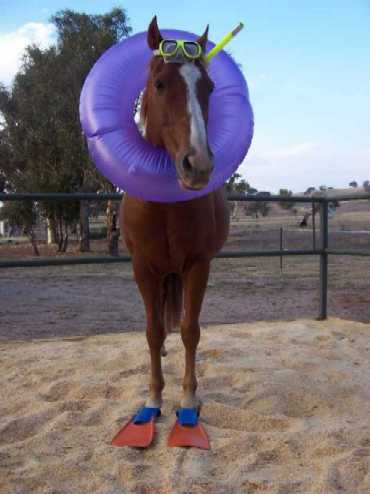Published in the Ocean Watch column, Honolulu Star-Advertiser © Susan Scott
May 18, 2007
I can’t count the hours I’ve spent snorkeling and diving the world’s oceans looking for sea horses. Of course, I enjoy all marine animals that pass my way, but if I see sea grass or seaweed beds nearby, I veer off to check for sea horses. I’ve never found a single one.
Then last week, I found 20,000. As you might guess, this was an extraordinary encounter — particularly when one of those sweet little sea horses curled its tail around my finger, and then, comfortable on a human hand, appeared to doze off.
The thousands of sea horses I refer to live in 40 big blue tanks on the Big Island’s Kona Coast at Hawaii’s Natural Energy Lab. Called Ocean Rider, this sea horse farm is the only one in the United States.
Wild sea horses need this farm, and more like it, because about 20 million of these fish are killed each year to make traditional Chinese medicine. Such huge catches are devastating the world’s sea horse populations. In one decade, numbers in the central Philippines fell 70 percent.
Last year, the Convention on International Trade in Endangered Species (CITES) listed the world’s 30-some species of sea horses as endangered, vulnerable or data deficient. This listing restricts sea horse trade between countries.
Another sea horse threat is the aquarium business, which accounts for another million captures per year. Sea horses taken from the wild do poorly in captivity and often die.
Ocean Rider’s sea horses, however, are a different story. They do just fine in aquariums and love people. Really. As several of us visitors stood gazing into the tanks, most sea horses swam to the surface to say hello.
OK, they were begging for food, but still. It says a lot about animals that are born and raised in captivity. When treated well, they learn to view humans as friends rather than enemies.
Part of the fun of the tour is feeding the eager sea horses some red anchialine shrimp raised on the premises. This gave my heart a tug because I’ve kept these native shrimp as pets. I felt better later when I learned that the shrimp multiply by the thousands daily.
The farm’s sea horses view the little shrimp as gourmet treats and sucked them into their mouths whole. The shrimp were gone in seconds.
Later we visitors fed the sea horses their usual frozen shrimp. The sea horses weren’t nearly as enthused, but eventually ate, a behavior fostered at the farm. Wild sea horses are famous for being fussy eaters and refusing frozen food.
Craig Schmarr and his wife, Carol Cozzi-Schmarr, are marine biologists who started the farm and have been raising sea horses in Kona for several years. Last year, they opened Ocean Rider to visitors.
We marine animal lovers should thank them for that. The experience is unique, moving and fun. Prices are $35 per person ($27 for kids), and you must make a reservation.
“Was it worth the money?” a local kayak shop owner asked Craig and me afterward as we loaded a double kayak onto our rental car.
“Yes,” we said simultaneously. “Do it.”
For tour times and tickets, call (808) 329-6840 or go to www.seahorse.com to send an e-mail.
I loved my visit to the sea horse farm, especially since it contributed to the conservation of these remarkable animals. Because of the Schmarrs’ efforts, I might yet see a sea horse in the wild.

A reader in Texas sent this picture, calling it a
“Texas Sea Horse”